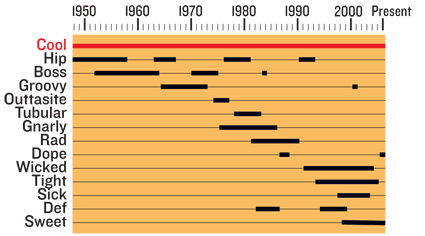I was reading some of the posts over at Mike Sansone’s CoverStations blog (thanks to Clay Parker Jones for the link) and got carried away with some of the ideas there.
Then I ended up over at Logic + Emotion reading a quote of the day — and got caught by this quote from Guy Kawasaki:
“it’s one thing to write about, or read about, a successful company after-the-fact and analyze how it achieved success. It’s another to build that successful company from scratch. Everyone knows that the innovator’s dilemma is to find a tipping point in order to cross the chasm. The question is not “why?” but “how?”.
It is a great quote because it encapsulates many of the issues that marketers and business innovators struggle with — if only we had hind sight! Of course, innovation is HARD work … and the reason WHY is the HOW that Guy Kawasaki is talking about.
Innovation is hard because it comes down to making ideas happen. The ideas themselves are cheap … but the ability to implement them, to take a concept, sell it (to supporters), fund it, build it, get people excited about it and then take it to market … all without putting a foot wrong! Well THAT is hard work. There are many decisions to be made, many competing agendas to connect and limited attention. But in a startup situation, the challenge is all the more acute.
So I began to think about the HOW of a startup.
There are plenty of opportunities for startups to maintain their innovation and cockiness early on. But as they become successful, as they start to generate income rather than buzz, and as they begin to formalise some of the fluid processes that made them successful, there are many “solidifying” temptations to resist. The venture capitalists may want a steady hand on the tiller … the other investors may want more governance … and the banks may want a more conservative financial controller.
But of course, internally, there has also been a lot going on … lessons have been learned, teams have become fixed and their speed has increased. The rough and ready are now silky smooth. They can take two steps at a time rather than one. And this is where innovation starts to decay.
Johnny Moore has a great post here explaining some of this type of thinking. Johnny is revisiting a book by Ellen Langer called Mindful Learning. He quotes from the book:
When people overlearn a task so that they can perform it by rote, the individual steps that make up the skill come together into larger and larger units. As a consequence, the smaller components of the activity are essentially lost, yet it is by adjusting and varying these pieces that we can improve our performance.
I had never really considered innovation in this way before! But then it started to make sense … the slow connection of ideas, the sequencing of small acts into a unified whole … an organisation geared towards the generation of ideas and their implementation. It was starting to resemble some of the work I was doing at IBM many years ago — focusing on some of the key, small, innovative programs, processes and approaches that yielded significant commercial or competitive advantage and sharing them with the rest of the company.
It is easy to think that innovation is BIG … but for every big idea, my guess is that there are thousands of smaller innovations that have been meticulously put in place. Innovation is hard because we are always looking for a big idea … when really we just need a small one to kick us along.
S.









